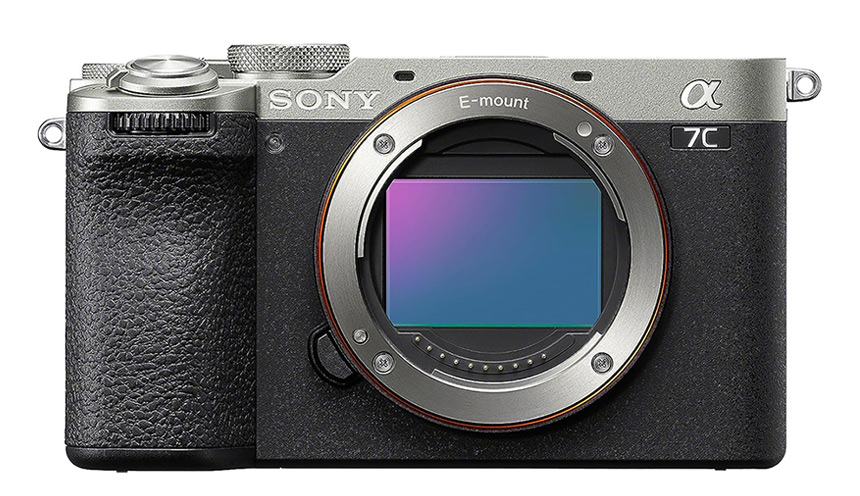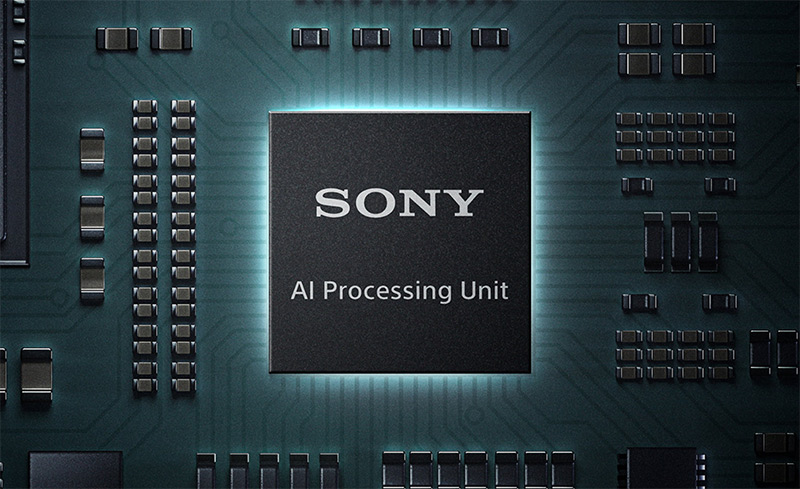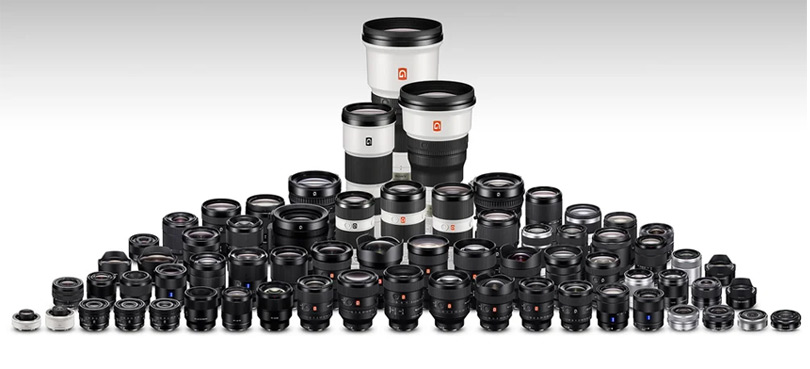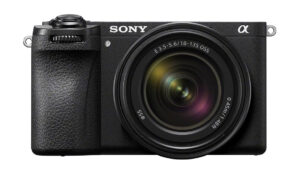The Sony A7C II and Sony A6700 are nearly identical cameras, at least on the outside.
Both were released in 2023 and offer a ton of new features in a small, compact body.
The A7C II is a full frame camera, whereas the A6700 is the most advanced APS-C model so far.
You’ll see which one is better in every category, as well as a few key points at the bottom to help you decide (it’s not an easy choice, unless you already have plenty of lenses).
1. Image Quality

Sensor:
- Sony A7C II: Full frame sensor with 33 megapixels
- Sony A6700: APS-C sensor (1.5x crop) with 26 megapixels
The A7C II has a bigger, full frame sensor, and these are often a little bit better in terms of image quality. Nowadays even APS-C sensors outperform old full frame sensors, so unless you zoom in 100%+ you will rarely spot any differences.
Is 33MP better than 26MP? It’s a little bit better for cropping/large prints, but both cameras have more than enough.
ISO:
- Sony A7C II: 100-51,200 expands to 50-204,800
- Sony A6700: 100-32,00, expands to 50-102,400
The A7C II goes 1 stop further and will deliver slightly cleaner images when above ~6,400.
Shutter Speed:
- Both cameras: Mechanical max 1/4000 (electronic max 1/8000)
Only the A7C II comes with the ability to close the shutter when the camera is turned off (takes a few seconds). This is great for swapping lenses outdoors; unfortunately none of the APS-C cameras have it.
Related: Sony APS-C vs Full-Frame
2. Video Settings

Video:
- Sony A7C II: It can record 4K at 30p (no crop) by oversampling from 7K, whereas 4K at 60p introduces a 1.5x crop. There is a 120p option but only in Full HD.
- Sony A6700: It can record at 4K at 60p (no crop) by oversampling from 6K, as well as 4K at 120p but with a 1.58x crop.
What’s great is that both can record 4K at 10-bit, 4:2:2, with all the standard Sony profiles and H.265 or H.264 formats.
Basically, the Sony A6700 has no cropping at any 4K resolution, but that’s due to its already 1.5x smaller sensor. The only time when this cropping can be an issue on the A7C II is when you use the same lens and want the same framing, but can’t due to the 1.5x crop when going from 30 to 60p.
There are no recording limits on either, and they both handle overheating well, especially given that their body sizes are similar.
Both offer custom LUTs and have dual native ISO’s.
Webcam:
- Both cameras: Live stream in 4K with active eye track.
3. Auto Focus

- Sony A7C II: 759AF points, works from -4EV to +20EV. Uses Sony’s latest AI chip
- Sony A6700: 759AF points, works from -3EV to +2EV. Uses Sony’s latest AI chip
Their autofocusing system is beyond incredible. Sony has always been a step above every other company, especially in video, but with the addition of the latest AI recognition chip, it’s super hard to get out of focus shots.
So what can this AI chip recognize? Faces, humans, birds, animals, insects, trains, cars and airplanes. It can also detects animal’s bodies/heads, rather than just eyes (ie. Sony A7 IV).
Even if the subject is turned away from you, or has a hat/glasses, the chip is intelligent enough to recognize it’s a human. This makes both cameras ideal for wildlife, sports, portraits and weddings.
The 759AF points on both cover 93% of the frame, but the A7C II can focus 1 stop better in low light (-4 vs -3EV).
4. Body Stabilization

- Sony A7C II: 7.0 stops (5-axis stabilization)
- Sony A6700: 5.0 stops (5-axis stabilization)
The A6700’s IBIS is good, but the A7C II’s is even better.
You won’t notice that much of a difference in video, but more so when taking pictures. You can easily get long exposure shots up to ~2 seconds without a tripod, which is incredible.
As far as video stabilization, both cameras offer Active Stabilization that crops the image by 1.1x, and gyro information that you can later correct (but lose a bit of resolution) in Catalyst Browse.
5. LCD & Viewfinder

LCD Display:
- Both cameras: 3.0″ LCD fully articulated with 1.04 million dots
Same size, articulation and resolution. The resolution is a bit disappointing to be honest, especially in 2023, but it’s still good.
Viewfinder:
- Both cameras: 2.39 million dots with 0.7x magnification
The A6700’s actual magnification is 1.07x, but given it’s an APS-C camera they both come down to the same specifications.
Viewfinder on both is positioned on the left side.
6. Memory Card & Speed

Memory Card:
- Both cameras: 1 x SD slot, UHS-II compatible
Due to their compact size, you won’t find two slots on Sony’s APS-C and entry-level full frame models.
Burst Mode & Buffer:
- Sony A7C II: 10 frames per second, 40 RAW files buffer
- Sony A6700: 11 frames per second, 59 RAW files buffer
For JPEG files, both can shoot well over 1000+.
The buffer makes both cameras excellent for wildlife and sports photography, but the A6700’s smaller sensor gives it a noticeable advantage. With 11fps and 59 RAW buffer, that’s ~5 seconds of shooting.
Related: The 7 Best Accessories for Sony A6700
7. Body & Ports

Size & Weight:
- Sony A7C II: 514g (1.13 lb) including battery, 124.0 x 71.1 x 63.4mm
- Sony A6700: 493g (1.09 lb) including battery, 122.0 x 69.0 x 75.1mm
Nearly identical weights and size, which goes to show how compact the full frame A7C II actually is! Even regular Sony FF cameras are quite small, but the A7C series rivals APS-C models very well.
Both are weather sealed (moisture and dust resistant), making them ideal for many outdoor situations.

As far as buttons and dial go, they’re also similar. You got the Still/Movie/S&Q switch next to the mode dial, but the A7C II’s is bigger and located more on top of the camera. None of them feature a joystick and their rear looks pretty much identical. Same menu, touch screen functions etc.
While bodies look similar, APS-C lenses are overall much smaller/lighter, so the complete setup will still be smaller with the A6700.
Related: Sigma announces the 10-18mm f/2.8, smallest APS-C wide-angle zoom

Connections:
- Sony A7C II: Micro HDMI, Mic & Headphone (3.5mm), USB-C 3.2 Gen 2, Bluetooth & WiFi
- Sony A6700: Micro HDMI, Mic & Headphone (3.5mm), USB-C 3.2 Gen 1, Bluetooth & WiFi
Same ports and connections, but the A7C II has an even faster USB-C transfer speed.
8. Battery Life

- Sony A7C II: 530 shots (EVF) & 560 shots (LCD) | 105 minutes for video – NP-FZ100 Battery
- Sony A6700: 550 shots (EVF) & 570 shots (LCD) | 100 minutes for video – NP-FZ100 Battery
Both use the classic Sony battery, but the bigger sensor of the A7C II results in a bit more work, hence the slightly lower count.
In real life, these numbers are noticeably higher, sometimes even up to twice the amount.
The good news is, both cameras can be powered through USB-C while in use.
9. Price & Lenses

Price:
- Sony A7C II: Body Only (~$2198)
- Sony A6700: Body Only (~$1398)
Again, the bigger price of the A7C II is due to its sensor and how compact it is for what it delivers.
You can check the currect price of Sony A7C II at Amazon at Sony A6700 at Amazon.
Available Lenses:
- Sony A7C II: FE-Mount
- Sony A6700: E-Mount
Both cameras have a ton of lenses available from Sony and other third-party brands such as Sigma, Tamron, Zeiss, Samyang and so on.
One of the main reasons you should buy the A6700 is if you’re looking to photograph as compact as possible. Full frame lenses are bigger, heaver and more expensive, whereas APS-C (E-mount) lenses can be much smaller.
You can use E-mount lenses on the A7C II but it will automatically crop, while FE-mount lenses will have the same view on the A6700.
Related: The 6 Best Lenses for Sony A7C II
10. Which one is for you?
This one is tough.
Outside, they look like the same camera. Weight, size, buttons, ports; hard to tell a difference.
Inside, they’ve got a very similar megapixel count, burst mode, identical AF systems, same battery.

Reasons to pick the Sony A7C II:
- Full frame sensor with 1 stop higher ISO sensitivity and slightly better low light focusing
- More lenses available, especially from Sony
- Shutter closes when turned off, better for switching between lenses in windy/harsh situations
- 7.0 vs 5.0 stops image stabilization (more noticeable in photos than video)
- If you print big, 7 megapixels more helps
The A7C II is an ideal camera if you really want a full frame sensor that doesn’t crop your field of view. Most of the time, this is bad for wildlife and sports, but great for landscape, architecture and anything that isn’t over ~300mm.
If you’re already invested in a full frame Sony setup, it would be smart to continue unless you plan on selling all existing gear.

Reasons to pick the Sony A6700:
- Around $800 cheaper body
- E-mount lenses are lighter, smaller and cheaper
- 4K at 120p, 4K doesn’t crop any extra when going from 30p to 60p
- 11 vs 10fps, with a 20 RAW file bigger buffer
Get the A6700 if size is your main priority. For some people, carrying too much weight turns into not taking pictures at all, so think about that in your case. Lenses play a big role.
Due to its 1.5x crop sensor, it’s way better for wildlife/sports because you don’t have to buy extremely long lenses (a 300mm lens would be equal to 450mm on A7C II). To counter this “issue” on the wide end, you’ll have to buy slightly wider E-mount lenses (plenty to choose from).
The extra $800 you save can be used on a new lens, accessories or a photography trip.
Common Questions:
Which Camera has Better Image Quality?
Both are optically excellent, but the A7C II will perform slightly better due to its bigger sensor. This difference will be extremely hard to notice unless you crop into an image.
Which Camera is Better for Video?
Both downsample from 7K/6K so you can expect a very detailed 4K image. Due to the A7C II’s crop at 4K60p and lack of any higher frame rate, the A6700 takes the crown here.
Which One is Better for Low Light?
The Sony A7C II. It has a 1.5x bigger sensor, so each pixel is slightly larger (unless it would have 1.5x the amount of pixels) which makes their light gathering capability better. The A6700 is amazing as well, and don’t forget that you can always denoise an image in Lightroom, but a FF sensor will always (slightly) outperform, unless the age gap is huge. The A7C II also focuses 1 stop lower and offers 1 stop higher max ISO.
Which One is Better for Traveling?
A6700, but only because you have smaller lenses to choose from. The A7C II is a compact full frame dream camera for many, but you have to be more precise when choosing an FE lens if your goal is to travel light.
Do They Have GPS?
Nor A7C II or A6700 come with built-in GPS. You’d have to connect the camera to your phone and use the app to record your location.
Do They Have a Built-in Flash?
No, one of the reasons why both A6700 and A7C II are so compact is because they do not feature a built-in flash.
Which Camera is Better for Durability?
Both feature a magnesium-alloy body that’s dust/moisture resistant, but the A7C II offers a cool feature that closes the shutter when your camera is turned off, saving you from potential dust problems.
Should I Wait for a New Model?
Both cameras were released in mid/late 2023. Given their 2-3 year break, you can be assured that there won’t be any new model until at least 2026.
What About Other Cameras?
Sony A7C II vs Sony A7 IV – The Same Camera?
Sony A7C II vs Sony A7C R.
Video Examples
Official videos from Sony.


